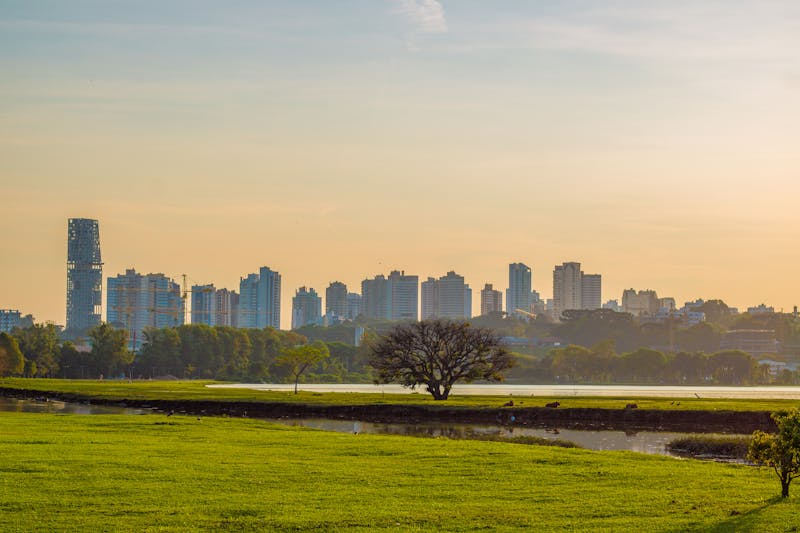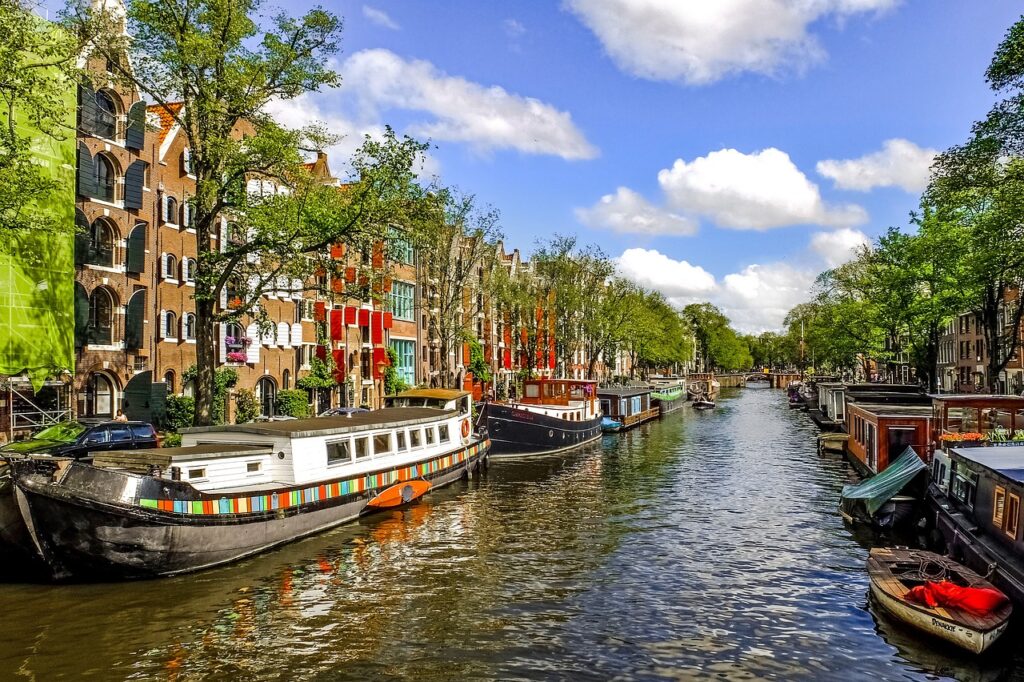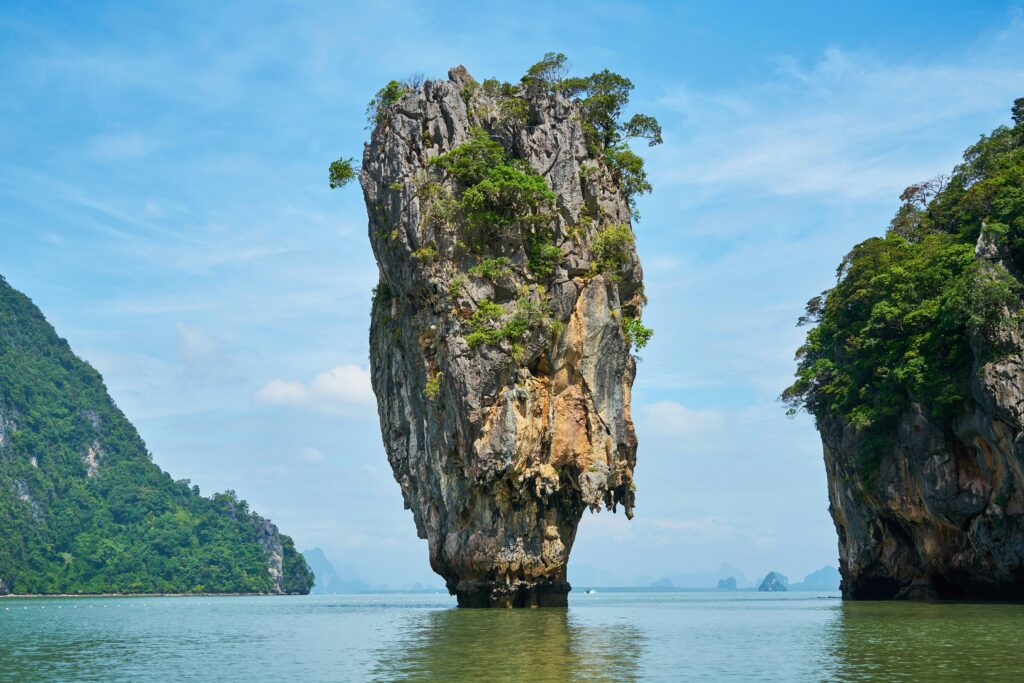Introduction
In today’s fast-paced world, where climate change and environmental concerns are at the forefront of global discussions, sustainable tourism has emerged as a pivotal movement. Traveling responsibly and choosing destinations that prioritize eco-friendly practices can make a significant impact on the planet. This article explores the ten most visited eco-cities that every environmentally conscious traveler should have on their bucket list.
The Rise of Eco-Cities
Eco-cities are urban areas designed with a strong emphasis on sustainability, aiming to reduce their environmental impact through innovative practices. These cities integrate green infrastructure, renewable energy, efficient waste management, and sustainable transportation systems to create a harmonious balance between urban living and nature.
Why Visit Eco-Cities?
Visiting eco-cities offers numerous benefits, both for travelers and the environment. Eco-tourism supports local economies, promotes conservation efforts, and provides travelers with unique experiences rooted in sustainability. By exploring these cities, tourists can learn about eco-friendly practices and contribute to the preservation of our planet.
1. Reykjavik, Iceland

Green Energy Initiatives
Reykjavik, the capital of Iceland, is a pioneer in utilizing renewable energy. Almost all of the city’s electricity and heating needs are met through geothermal and hydroelectric power. Visitors can explore geothermal plants and learn about Iceland’s innovative energy solutions.
Sustainable Transport
The city promotes the use of public transportation and cycling. With a well-developed network of buses and bike lanes, getting around Reykjavik is convenient and eco-friendly. The city’s commitment to reducing carbon emissions makes it a model for sustainable urban mobility.
2. Copenhagen, Denmark

Bicycle Culture
Copenhagen is renowned for its extensive cycling infrastructure. With over 390 kilometers of dedicated bike lanes, the city encourages residents and visitors alike to choose biking as their primary mode of transport. Cycling not only reduces traffic congestion but also contributes to cleaner air.
Renewable Energy Sources
Denmark’s capital is a leader in renewable energy, particularly wind power. The city’s iconic wind turbines, visible from many vantage points, symbolize Copenhagen’s commitment to becoming carbon neutral by 2025. This ambitious goal is supported by various green initiatives and policies.
3. Vancouver, Canada

Green Spaces
Vancouver boasts an abundance of parks and green spaces, making it one of the greenest cities in the world. Stanley Park, a sprawling urban park, offers residents and visitors a natural retreat within the city. The city’s commitment to preserving green areas enhances the quality of life and promotes biodiversity.
Zero Waste Initiatives
Vancouver aims to become a zero-waste city by 2040. The city’s comprehensive recycling and composting programs are designed to reduce waste sent to landfills. Visitors can participate in these initiatives by properly disposing of waste and supporting businesses that prioritize sustainability.
4. Portland, USA

Green Building Standards
Portland is a hub for green architecture and sustainable building practices. The city has numerous LEED-certified buildings that exemplify eco-friendly design and energy efficiency. Visitors can take tours of these buildings to learn about sustainable construction techniques.
Community Gardens
Portland’s community gardens provide residents with spaces to grow their own food, promoting local agriculture and reducing food miles. These gardens are also social hubs where people can connect with nature and each other, fostering a sense of community.
5. Stockholm, Sweden

Efficient Waste Management
Stockholm has an impressive waste management system that focuses on reducing, reusing, and recycling. The city’s waste-to-energy plants convert non-recyclable waste into energy, significantly reducing landfill usage. This innovative approach ensures that Stockholm remains clean and sustainable.
Eco-Friendly Transportation
Stockholm’s public transportation system is both efficient and eco-friendly. The city’s extensive network of buses, trains, and ferries runs on renewable energy sources, making it easy for residents and tourists to travel sustainably. Biking is also encouraged, with numerous bike lanes throughout the city.
6. Curitiba, Brazil

Innovative Urban Planning
Curitiba is a shining example of innovative urban planning. The city’s unique design prioritizes green spaces and efficient public transport. The extensive bus rapid transit (BRT) system is a model for cities worldwide, providing fast and reliable transportation while reducing carbon emissions.
Public Transport System
The BRT system in Curitiba is complemented by pedestrian-friendly streets and parks. This integrated approach to urban planning ensures that residents have access to green spaces and can travel easily without relying on cars, contributing to a healthier environment.
7. Singapore

Garden City Concept
Singapore’s Garden City initiative aims to transform the city into a lush, green urban oasis. With extensive tree planting, vertical gardens, and green roofs, the cityscape is adorned with greenery. Gardens by the Bay, a stunning horticultural attraction, showcases Singapore’s dedication to integrating nature with urban development.
Clean Energy Programs
Singapore is investing heavily in clean energy, with a focus on solar power. The city-state’s commitment to reducing its carbon footprint includes ambitious goals for renewable energy adoption and energy-efficient buildings, making it a leader in sustainable urban living.
8. Amsterdam, Netherlands

Sustainable Transport
Amsterdam is famous for its cycling culture, with bikes outnumbering cars in the city. The extensive network of bike paths and bike-friendly infrastructure makes cycling a convenient and eco-friendly mode of transportation. The city’s efforts to reduce car usage contribute to lower emissions and cleaner air.
Green Architecture
Amsterdam is home to numerous examples of green architecture, including buildings with energy-efficient designs and sustainable materials. The city’s focus on sustainable construction practices ensures that new developments contribute positively to the environment.
9. Barcelona, Spain

Urban Green Spaces
Barcelona’s commitment to sustainability is evident in its urban planning. The city has numerous parks and green spaces that provide residents with recreational areas and promote biodiversity. Initiatives like the Superblocks project aim to reduce traffic and create more pedestrian-friendly spaces.
Renewable Energy Policies
Barcelona is actively promoting renewable energy through various policies and programs. The city’s solar energy initiatives and efforts to increase energy efficiency in buildings are part of a broader strategy to reduce carbon emissions and combat climate change.
10. Ljubljana, Slovenia

Zero Waste Goals
Ljubljana is the first capital city in the European Union to adopt a zero-waste goal. The city’s comprehensive waste management system includes recycling, composting, and waste reduction programs. Ljubljana’s commitment to minimizing waste sets an example for other cities to follow.
Green Urban Planning
Ljubljana’s urban planning focuses on sustainability and green living. The city’s pedestrian-friendly streets, extensive parks, and green initiatives create a livable environment that prioritizes residents’ well-being and environmental health.
The Future of Eco-Cities
As the world continues to grapple with environmental challenges, the concept of eco-cities is gaining traction. Emerging eco-cities are incorporating cutting-edge technologies and innovative practices to create sustainable urban environments. These cities are setting new standards for sustainability and inspiring others to follow suit.
How to Make Your Travel Eco-Friendly
Travelers can play a crucial role in promoting sustainability by adopting eco-friendly practices. Simple actions like using public transport, supporting local businesses, reducing plastic use, and choosing eco-friendly accommodations can significantly reduce your environmental impact. Additionally, educating oneself about the destination’s sustainability efforts can enhance the travel experience.
The Role of Technology in Eco-Cities
Technology is a driving force behind the development of eco-cities. Smart city initiatives use data and technology to optimize urban living, improve energy efficiency, and reduce waste. Innovations such as smart grids, renewable energy systems, and advanced waste management technologies are crucial for creating sustainable cities.
Challenges Facing Eco-Cities
Despite the many benefits of eco-cities, they face several challenges. Balancing economic growth with environmental sustainability is a complex task. Additionally, overcoming infrastructure limitations and ensuring equitable access to green spaces and resources are critical issues that need addressing.
Community Involvement in Eco-Cities
Community involvement is essential for the success of eco-cities. Grassroots movements, civic engagement, and public participation in sustainability initiatives can drive meaningful change. Encouraging residents to take an active role in environmental conservation fosters a sense of ownership and commitment to sustainable living.
Government Policies Supporting Eco-Cities
Government policies play a pivotal role in the development of eco-cities. Policy frameworks that support renewable energy, green building standards, and sustainable transportation are crucial. International collaborations and knowledge sharing can also accelerate the adoption of best practices in urban sustainability.
Eco-City Tourism: A Growing Trend
Eco-city tourism is on the rise, driven by the increasing awareness of environmental issues and the desire for sustainable travel experiences. This trend benefits the environment and boosts local economies, creating a win-win situation for both tourists and host cities.
Conclusion
The importance of sustainable urban development cannot be overstated. Eco-cities represent the future of urban living, where economic growth and environmental sustainability go hand in hand. By visiting and supporting these cities, travelers can contribute to a more sustainable world while enjoying unique and enriching experiences.
FAQs
What makes a city an eco-city? An eco-city prioritizes sustainability through practices like renewable energy use, efficient waste management, green urban planning, and sustainable transportation.
How do eco-cities benefit the environment? Eco-cities reduce carbon emissions, conserve resources, and promote biodiversity, leading to a healthier and more sustainable environment.
Which is the most eco-friendly city? While many cities excel in sustainability, Copenhagen, Denmark, is often cited as one of the most eco-friendly cities due to its extensive cycling infrastructure and renewable energy initiatives.
How can tourists contribute to sustainability? Tourists can contribute by using public transportation, supporting local and eco-friendly businesses, reducing waste, and participating in sustainability programs.
What are the challenges faced by eco-cities? Challenges include balancing growth with sustainability, infrastructure limitations, and ensuring equitable access to green spaces and resources.
Why is eco-tourism important? Eco-tourism supports conservation efforts, boosts local economies, and provides educational experiences that promote environmental awareness.



